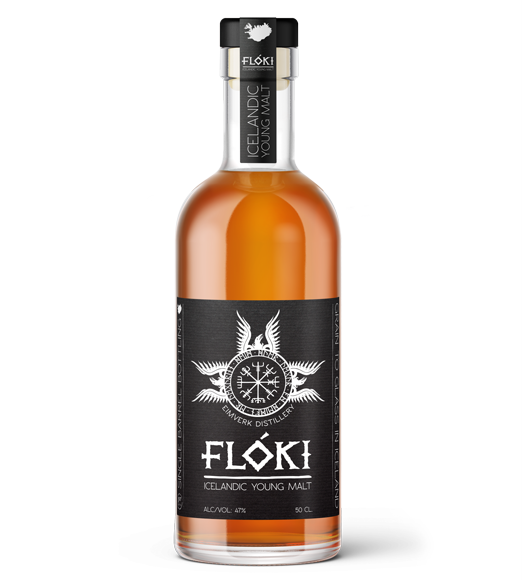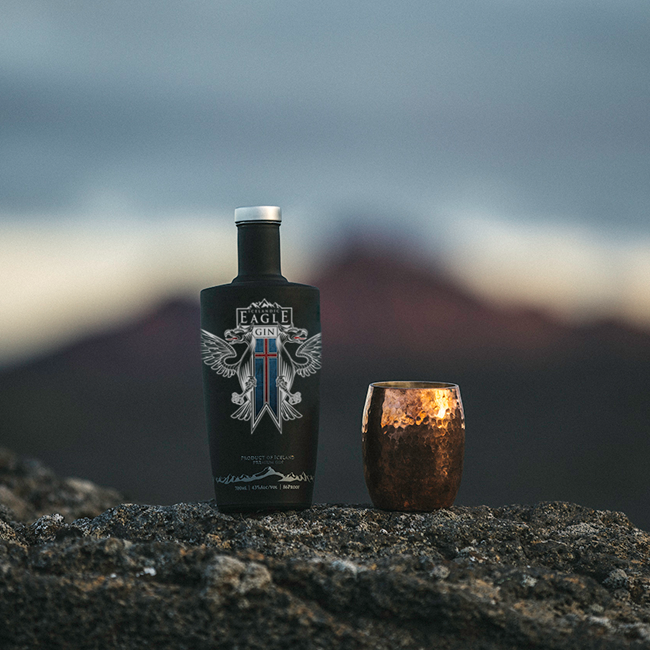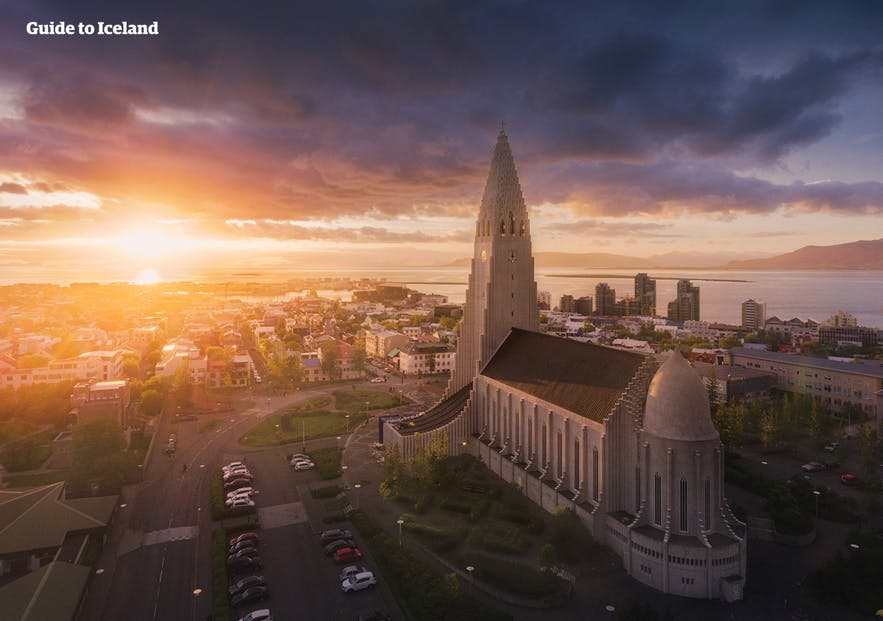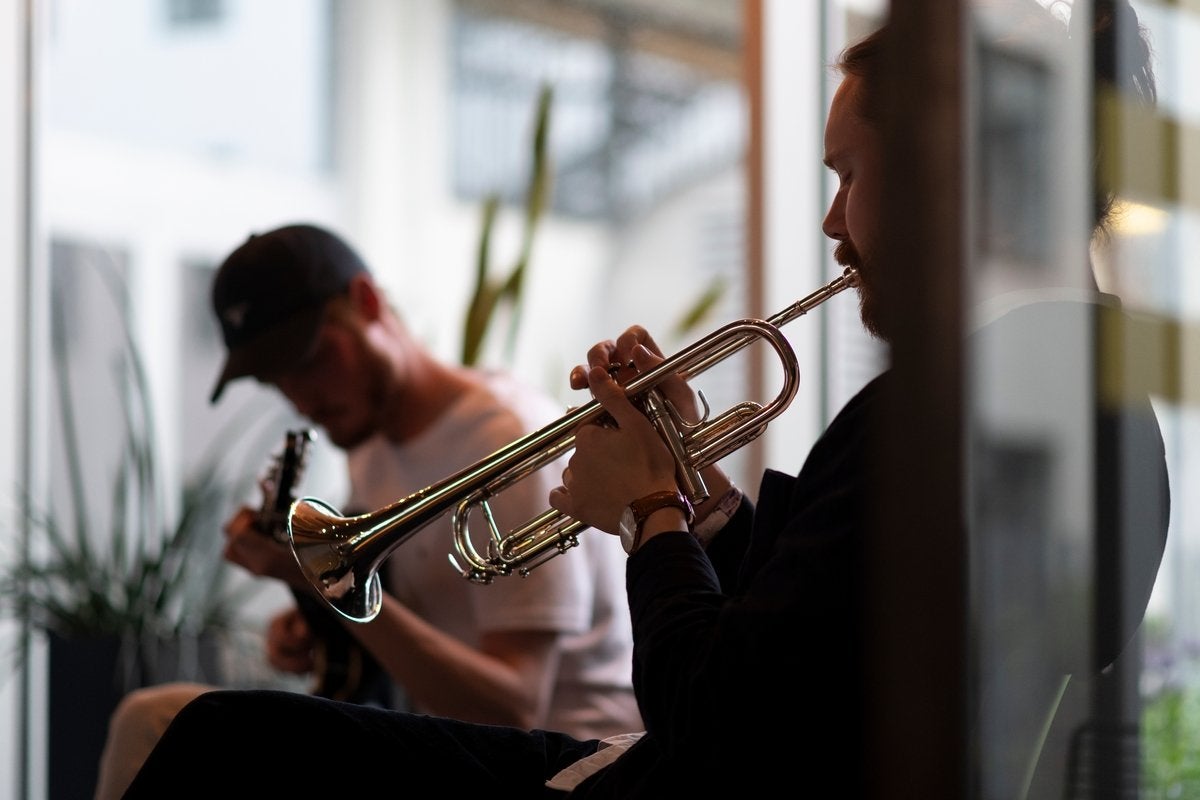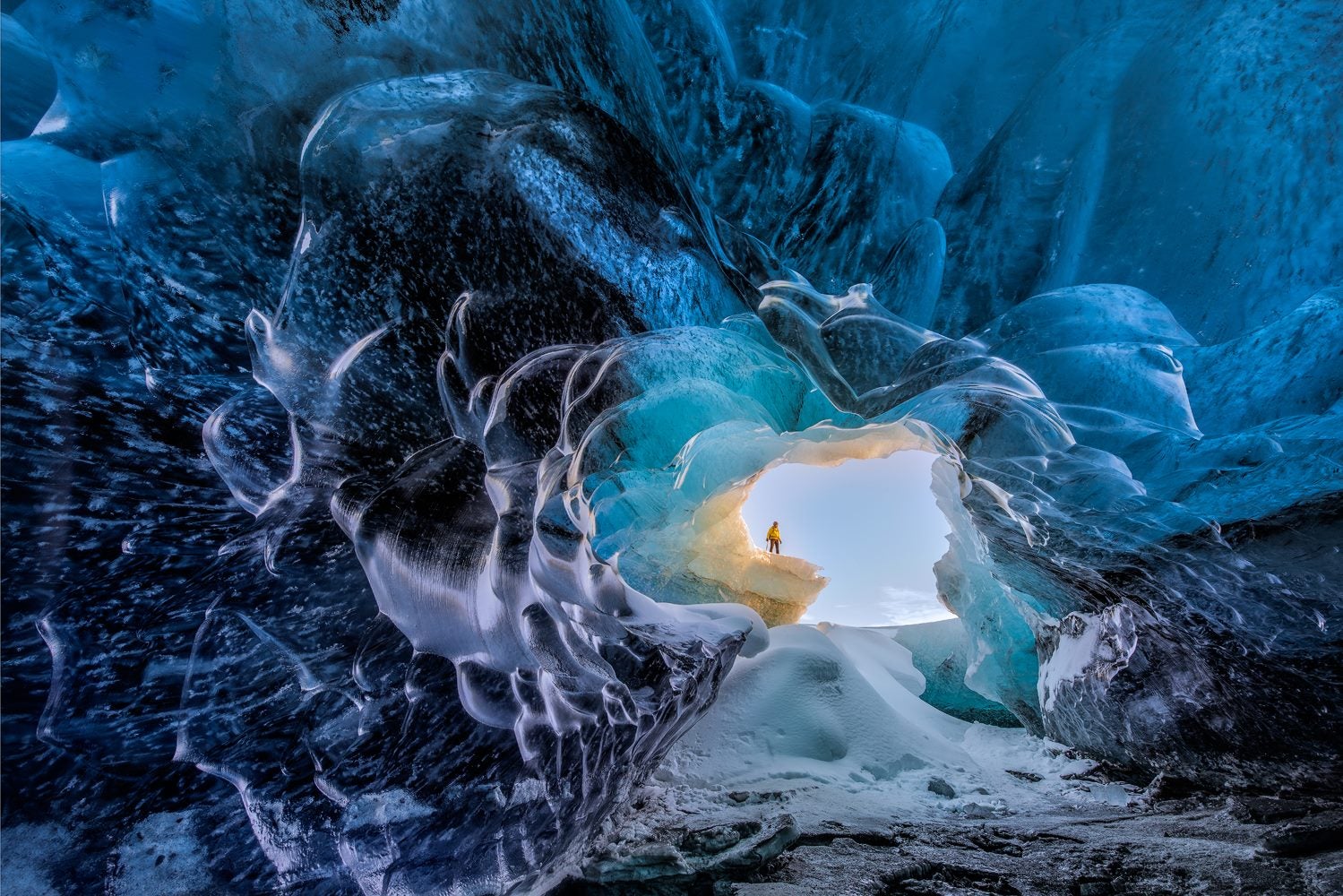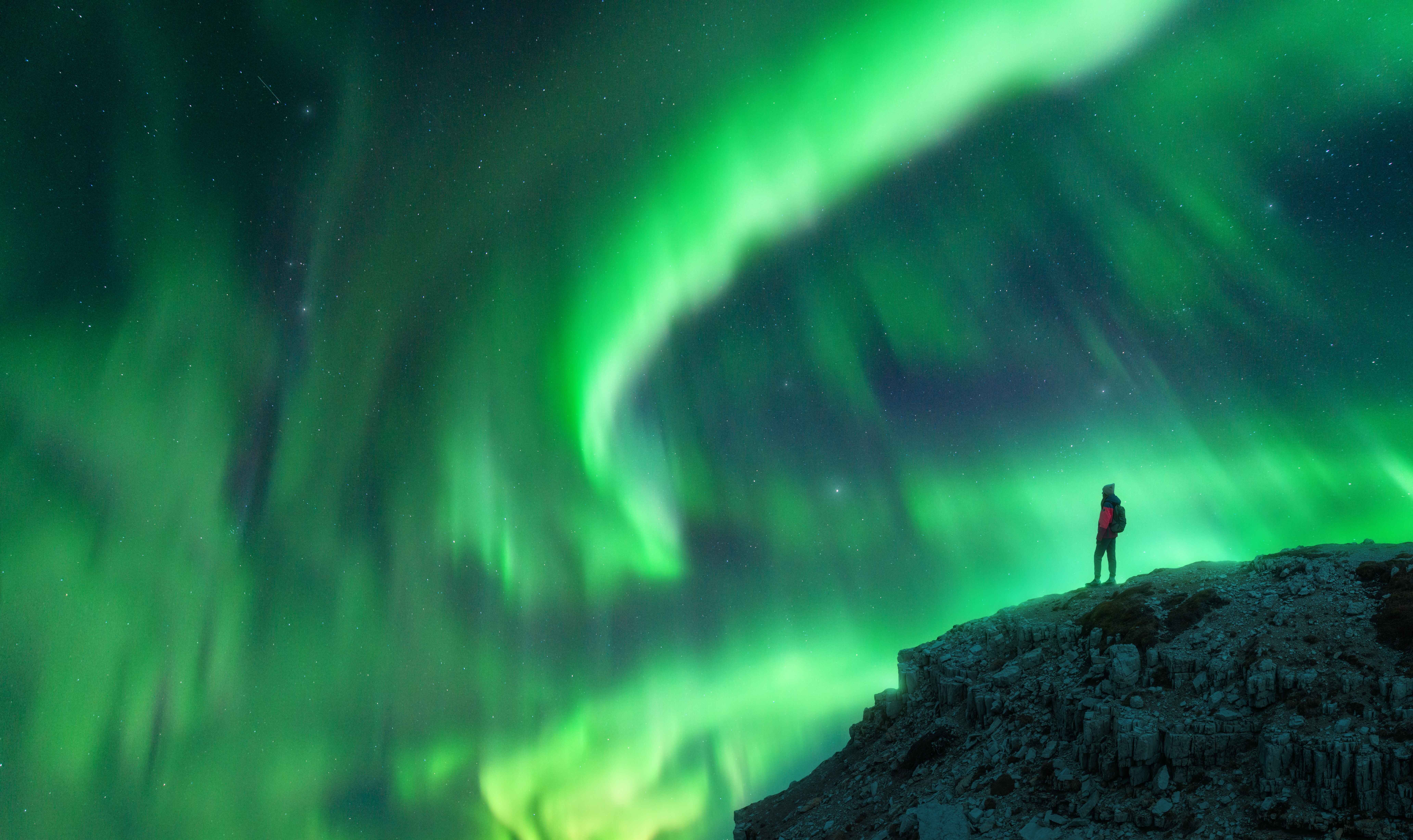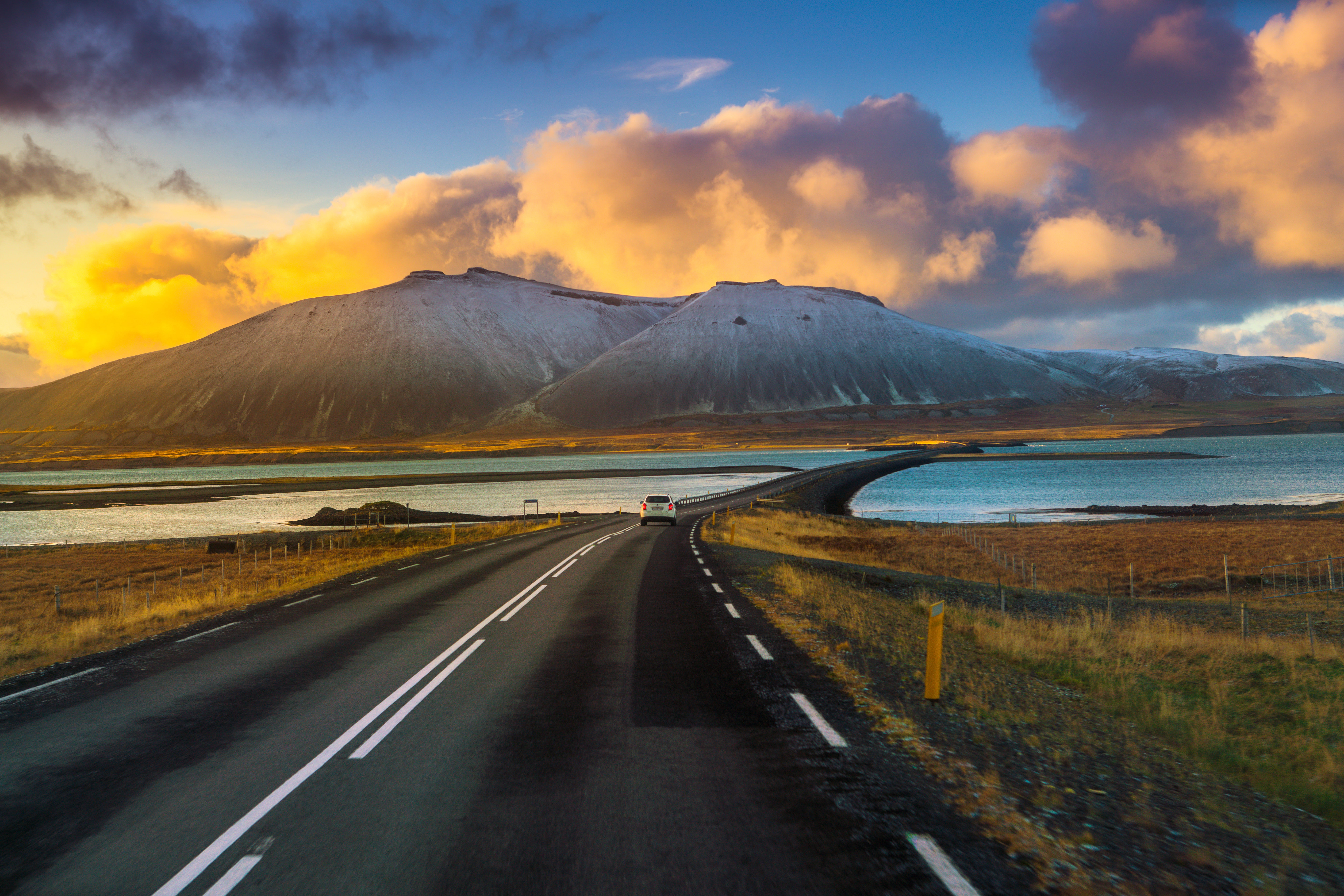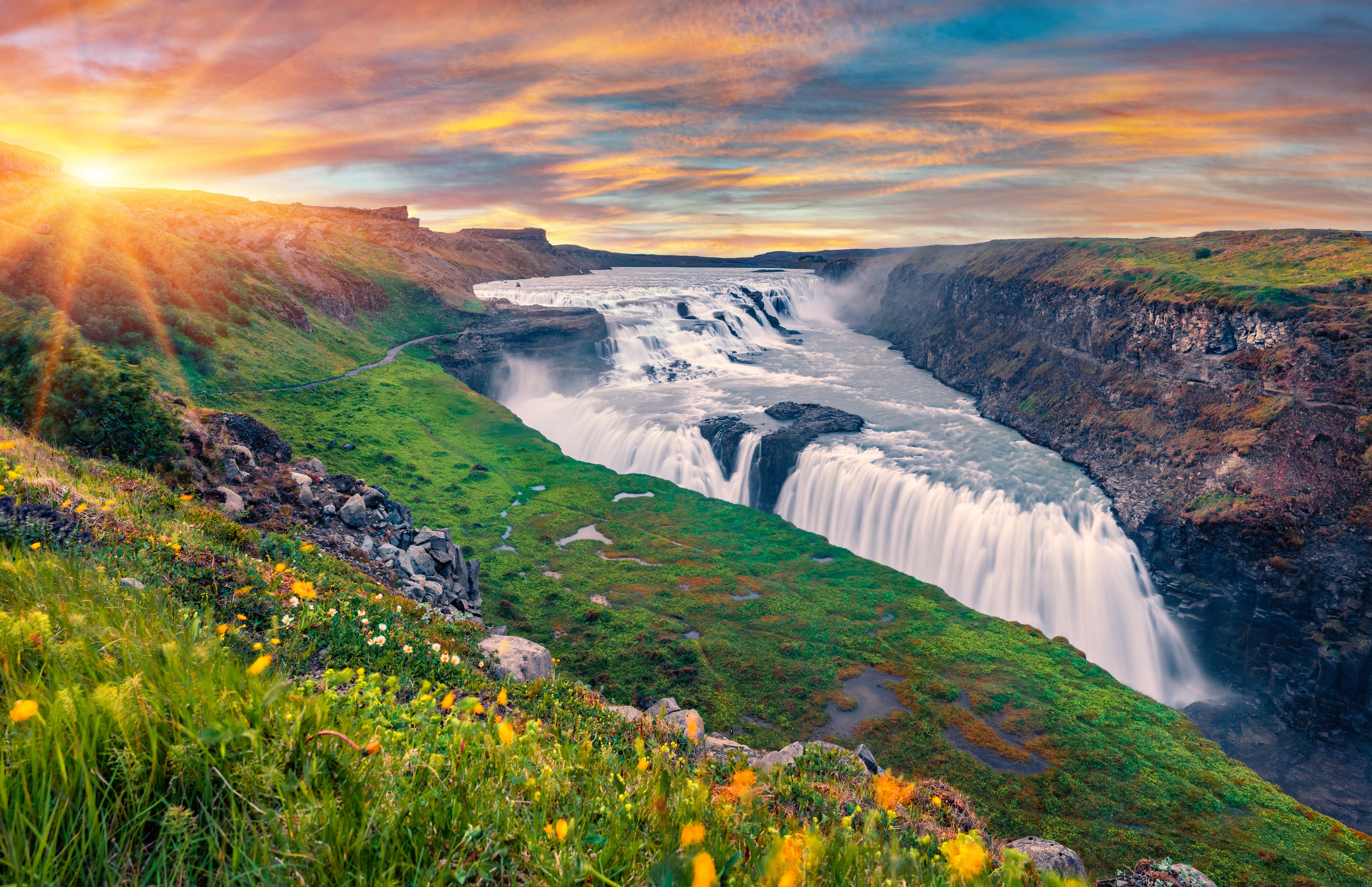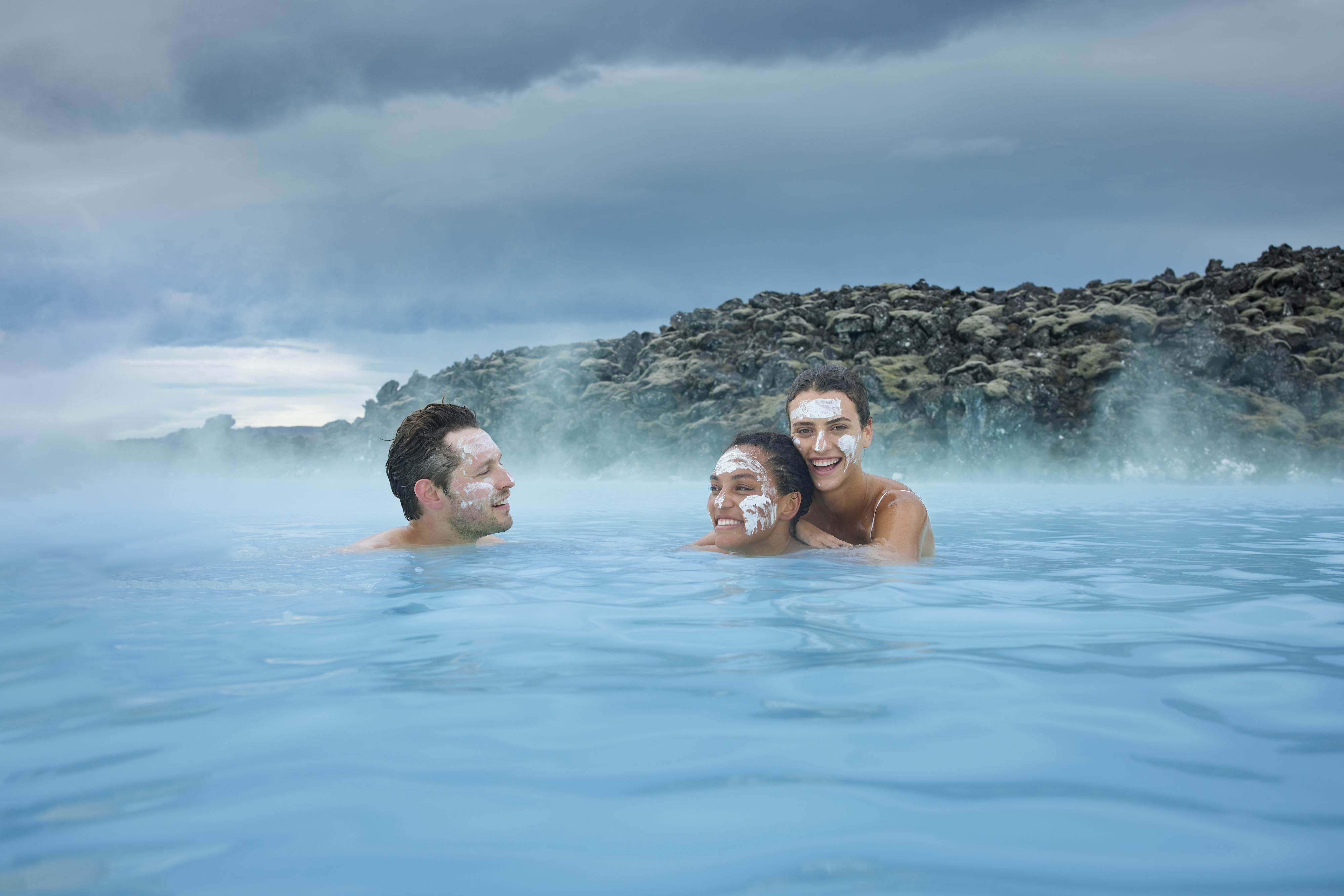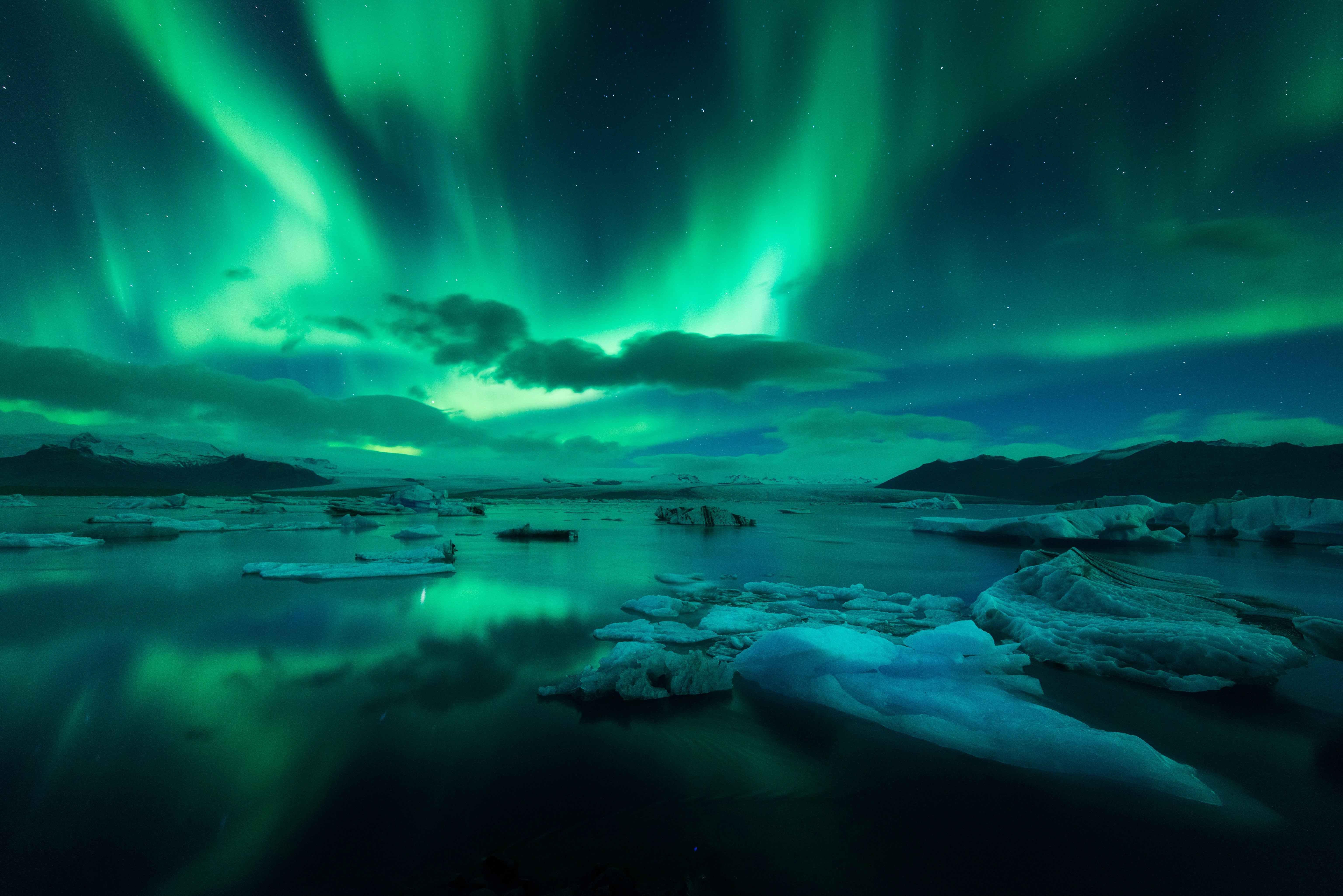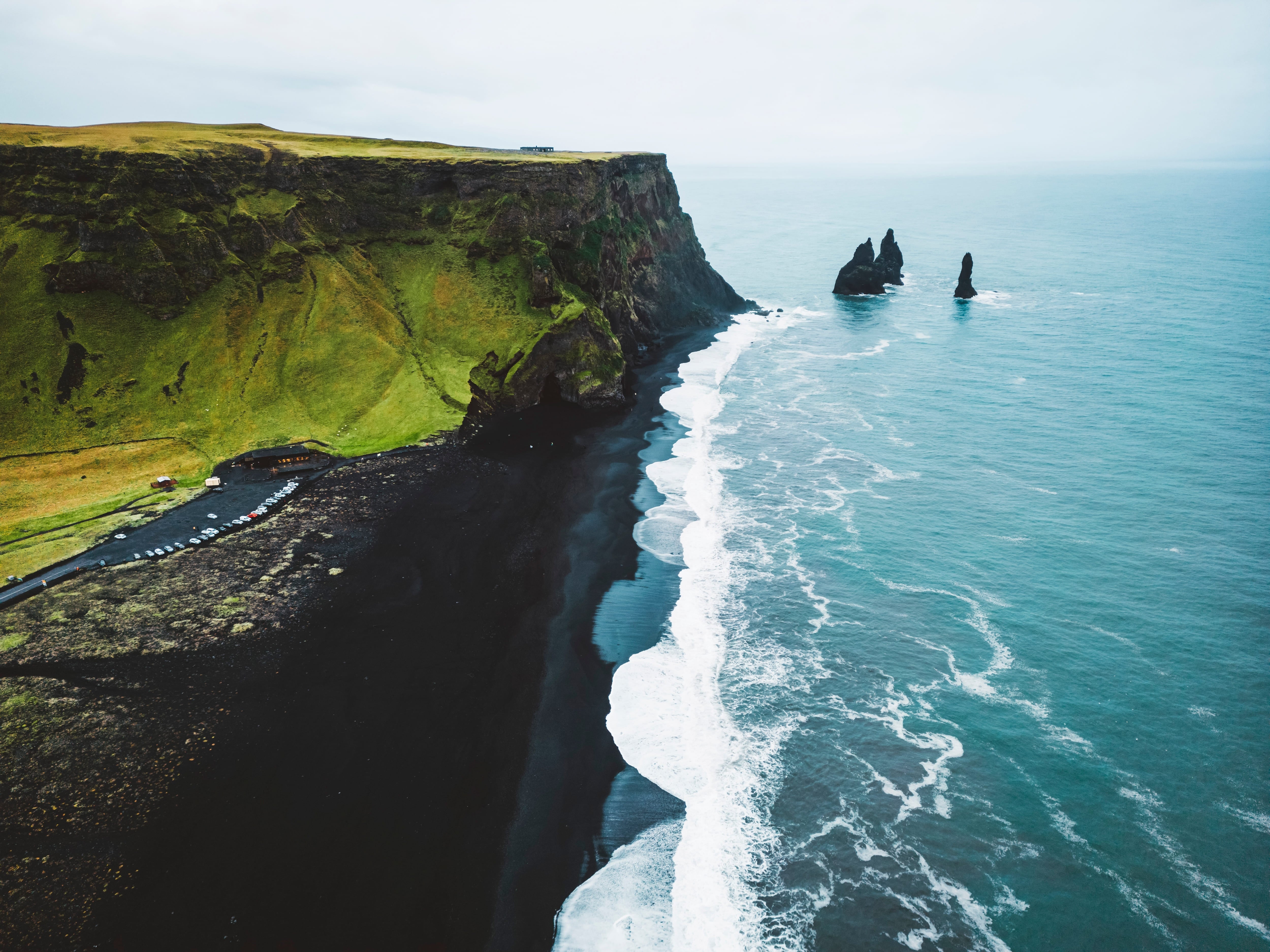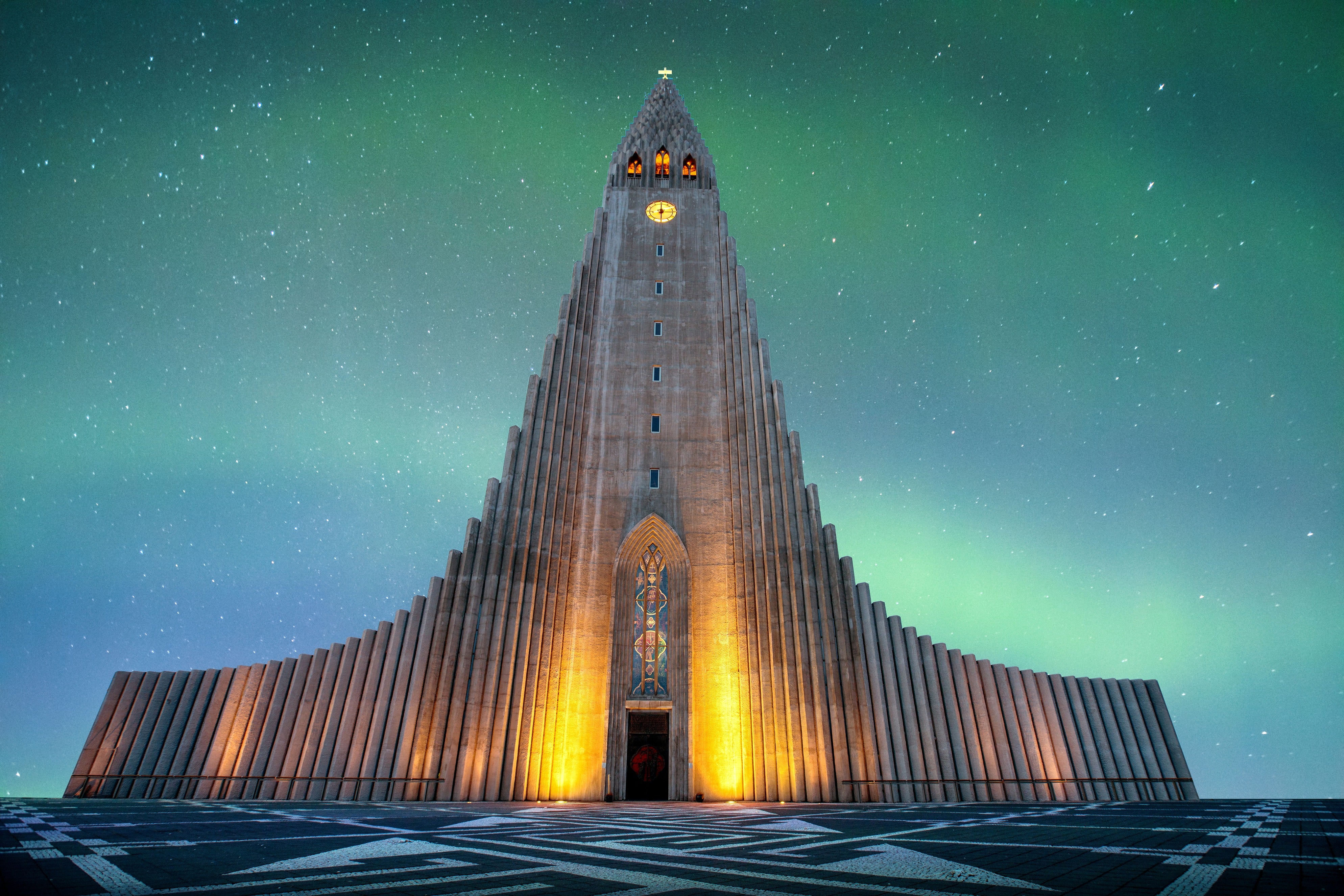Why You Can Trust Our Content
Guide to Iceland is the most trusted travel platform in Iceland, helping millions of visitors each year. All our content is written and reviewed by local experts who are deeply familiar with Iceland. You can count on us for accurate, up-to-date, and trustworthy travel advice.
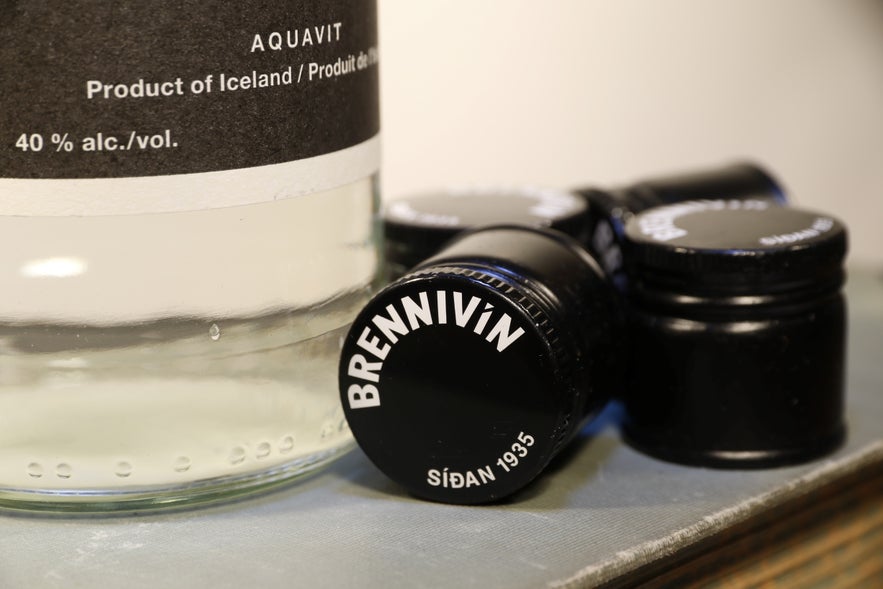
Explore the heritage of Icelandic liquor and spirits and learn how the country’s distinctive drinking culture has evolved. The national spirit Brennivin, smooth Katla vodka, and beers brewed with Icelandic moss reflect a culture built on creativity and tradition.
Iceland’s relationship with alcohol has been shaped by its unique history. Years of prohibition, strict trade policies, and a challenging climate led Icelanders to become inventive in brewing and distilling. Today, the country produces internationally recognized spirits and a growing variety of craft beers, best discovered on food and drink tours.
These tours introduce visitors to schnapps, gin, whisky, and locally brewed beers. Many Reykjavik tours highlight the city’s lively bar scene, where mixologists showcase Icelandic spirits and innovative flavors.
For a slower and more immersive option, Reykjavik walking tours take guests to hidden cocktail bars, tasting rooms, and small breweries. A popular choice is the beer and schnapps guided walking tour in Reykjavik, where travelers sample unique drinks while learning about brewing traditions.
Read on to discover the top drinks to try in Iceland and where to find them.
Why You Can Trust Our Content
Guide to Iceland is the most trusted travel platform in Iceland, helping millions of visitors each year. All our content is written and reviewed by local experts who are deeply familiar with Iceland. You can count on us for accurate, up-to-date, and trustworthy travel advice.
Key Takeaways
-
Alcohol has been produced in Iceland since its settlement, but production has historically been tricky due to harsh weather conditions and restrictions.
-
Iceland had a decades-long alcohol prohibition that was only fully lifted late into the 20th century.
-
Iceland has a thriving alcohol industry where innovation meets top-end craftsmanship. Several iconic liquors, including Brennivin, are well-known internationally.
-
Icelandic people are known to have a drink or two, particularly during happy hour.
-
A great way to experience the unique flavors of Icelandic liquor is on a guided walking tour or a bar crawl that lasts well into the night.
A Brief History of Icelandic Liquor
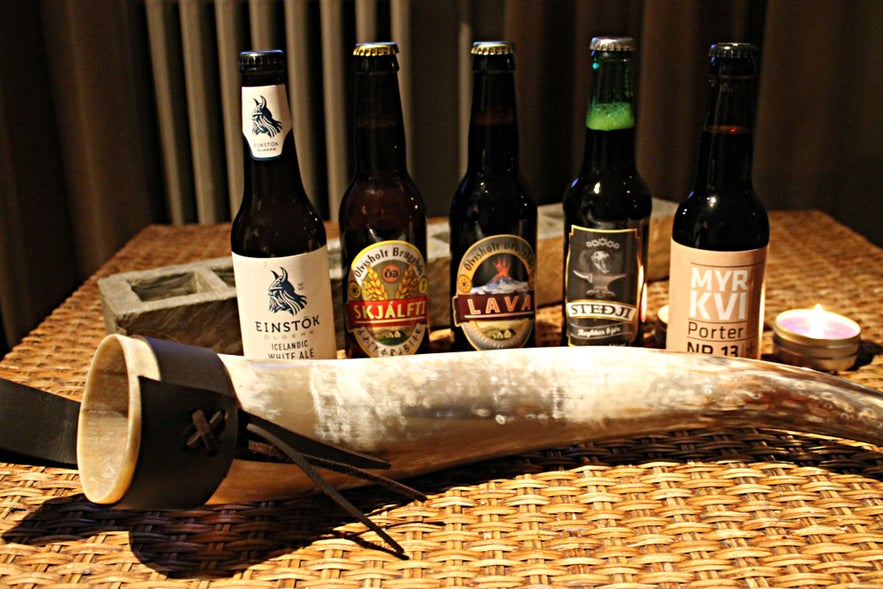 Alcohol consumption and production in Iceland date back to the first settlement of the island, while strict alcohol regulations only came into play in the 20th century.
Alcohol consumption and production in Iceland date back to the first settlement of the island, while strict alcohol regulations only came into play in the 20th century.
Early History of Icelandic Liquor
Norse settlers brought their knowledge of brewing and distillation techniques to the island in the 9th century. Ale, mead, and beer are commonly mentioned in Icelandic sagas and old poems, which describe a lively drinking culture.
In Norse mythology, the goat Heiðrún resides on the roof of Valhalla and consumes the leaves of the World Tree, Yggdrasil. Her diet produces an endless supply of mead or ale, which flows from her udders.
Despite the Icelandic people's long-lasting enthusiasm for a drink, their ancestors were well aware of the dangers of drinking too much. Consider this excerpt from the old Icelandic poem “Havamal”:
Less good than they say for the sons of men
is the drinking oft of ale:
for the more they drink, the less can they think
and keep a watch o'er their wits.
The country's difficult climate made brewing and distilling alcohol hard, so local drinkers mostly relied on imports throughout the centuries. In the 17th and 18th centuries, the Danish Crown had a monopoly on the import of alcohol into Iceland.
Icelandic Prohibition
Early in the 20th century, a growing number of voices worried that alcohol consumption in Iceland had become excessive and was delaying societal growth. The prohibition era began in 1915 when the initial ban on the sale of all alcohol was introduced.
Only a few years later, in 1922, mounting trade pressure resulted in a partial lifting of the ban. Spain played a key part in this decision — the country threatened to stop importing Icelandic fish if Spanish wine remained banned on the island. The import of alcohol was permitted if the strength of the alcohol was under 21%, with beer being the only exception.
In the years before alcoholic beverages were legalized again, the nation didn’t give up its preference for a drink. Homebrewing and smuggling became commonplace. Doctors could prescribe alcohol for medicinal use to treat mild ailments.
In 1935, spirits were legalized in Iceland, yet beer remained forbidden. Iceland was unique in this regard — due to concerns over its affordability and potential impact on youth, beer remained banned until 1989. This longstanding ban makes Iceland the only Western democracy to have a nationwide prohibition on beer for such a prolonged period.
The beer ban was lifted on March 1, 1989, a day that the Icelandic people now celebrate as Beer Day.
Icelandic Liquor Today
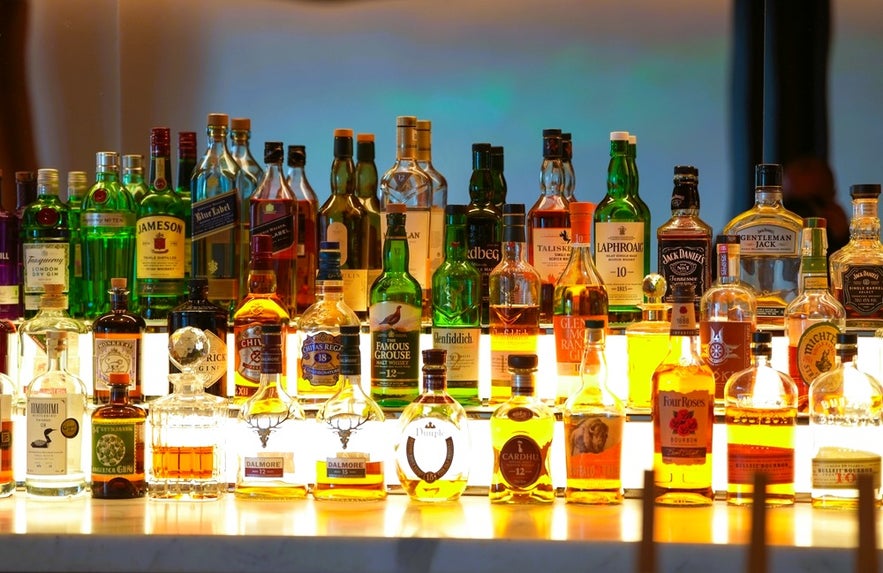 With the prohibition and the beer ban in the past, Icelandic alcohol production has evolved into a thriving industry celebrated for its craftsmanship and distinct flavors. Icelandic breweries and distilleries craft spirits, including vodka, gin, schnapps, and traditional Icelandic liqueurs infused with native botanicals.
With the prohibition and the beer ban in the past, Icelandic alcohol production has evolved into a thriving industry celebrated for its craftsmanship and distinct flavors. Icelandic breweries and distilleries craft spirits, including vodka, gin, schnapps, and traditional Icelandic liqueurs infused with native botanicals.
As of July 1, 2022, Icelandic breweries may sell their products directly to consumers — a measure put in place to support local producers and regional economies. At the same time, alcohol taxes have risen significantly at duty-free shops, impacting this popular avenue for obtaining liquor and spirits in Iceland.
Online alcohol retail exists as a direct sales loophole, but these operations have faced challenges. As recently as December 2024, the Metropolitan Police ordered several online alcohol retailers to suspend sales during national church holidays.
The World Health Organization commends Iceland for the country’s alcohol policies. The WHO recognizes the state monopoly on retail sales as an effective measure to promote moderation in alcohol consumption and curtail heavy drinking.
Icelandic Drinking Culture
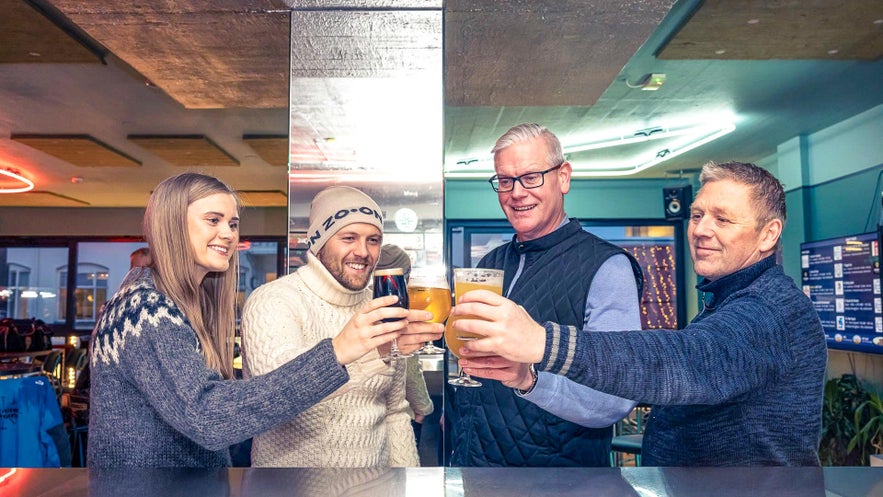 Many visitors are shocked by the high drink prices at bars and clubs in Reykjavik. The locals share this disappointment, and many will opt to start the night with drinks at home to save money before venturing out later in the evening.
Many visitors are shocked by the high drink prices at bars and clubs in Reykjavik. The locals share this disappointment, and many will opt to start the night with drinks at home to save money before venturing out later in the evening.
Because of this, the city center area may seem quite empty early in the evening but will fill up around midnight. Bars and clubs stay bustling until 4:00–5:00 AM, especially on the weekends.
If you can’t stay awake so late into the night or are looking for a more structured experience, join one of the food and drink tours — an excellent alternative to “pregaming” at your hotel.
If you happen to be in town on March 1, don't miss the chance to commemorate Beer Day with a craft beer pint or two. Many bars and pubs offer special promotions and drink offers on Beer Day.
Thorrablot
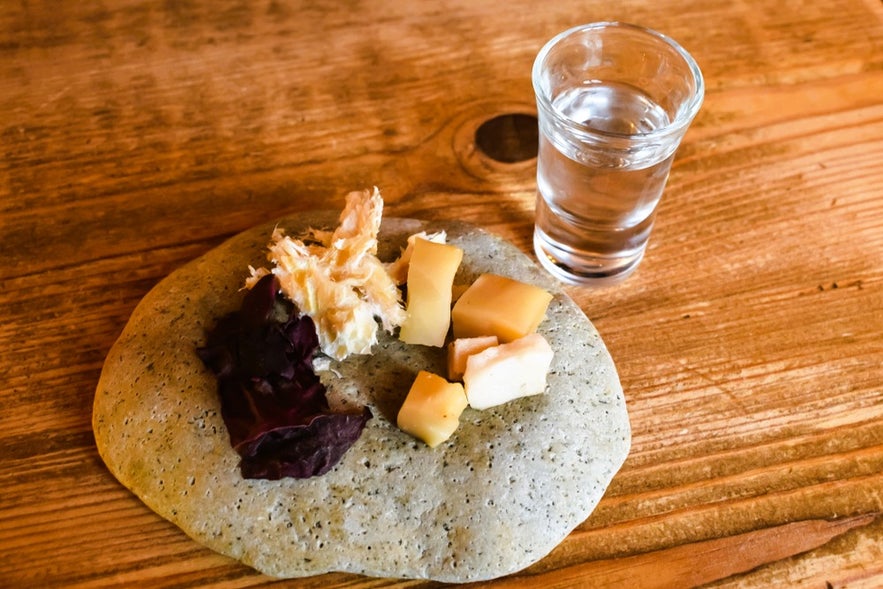 Drinking is part of most festivities in Iceland, including the midwinter festival Thorrablot, where people come together for feasting and drinking. Traditional Icelandic foods are served, including cured meats, fermented shark, soured ram testicles, and liver sausage.
Drinking is part of most festivities in Iceland, including the midwinter festival Thorrablot, where people come together for feasting and drinking. Traditional Icelandic foods are served, including cured meats, fermented shark, soured ram testicles, and liver sausage.
If this list doesn't make your mouth water, you can take comfort that many of these delicacies are to be washed down with the iconic liquor Brennivin. Most locals only partake in these Icelandic foods once a year, but for outsiders, it can be seen as a rite of passage.
The Secret to Icelandic Spirits
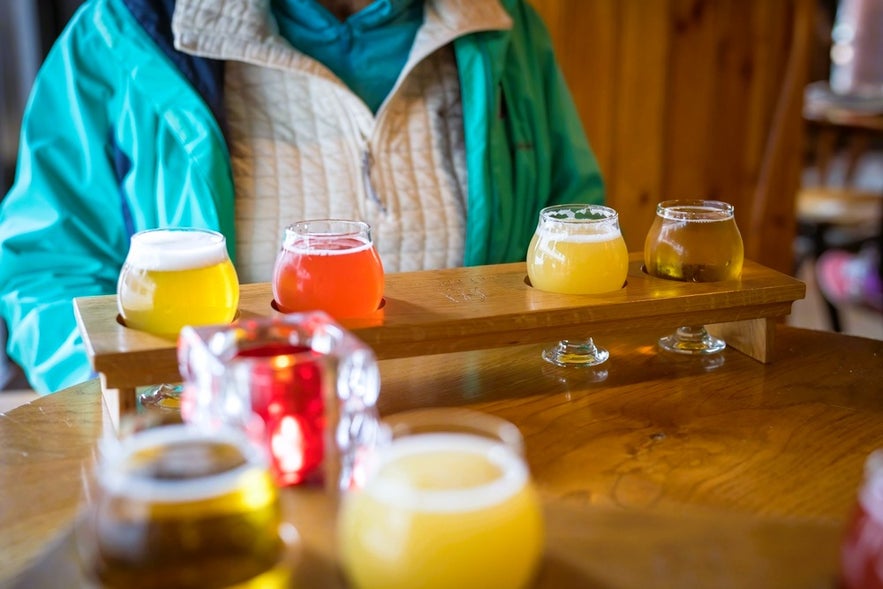 While Iceland might be new to the international brewing and distillation scene, it has already made a splash, thanks to a few unique advantages.
While Iceland might be new to the international brewing and distillation scene, it has already made a splash, thanks to a few unique advantages.
Pure Icelandic Water
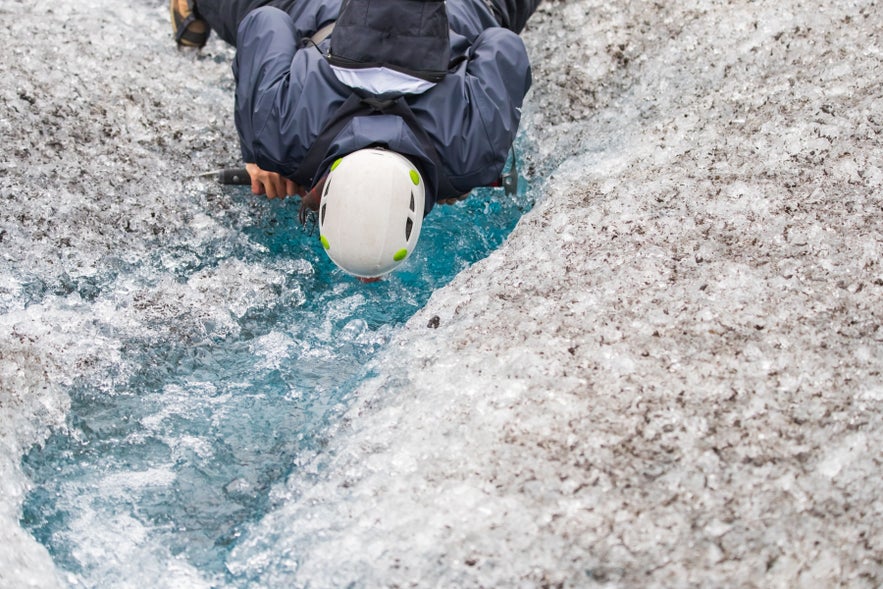 Iceland's freshwater supply originates primarily from glacial meltwater and natural springs. The country is home to numerous glaciers and ice caps, providing a steady and plentiful supply of pure, mineral-rich water.
Iceland's freshwater supply originates primarily from glacial meltwater and natural springs. The country is home to numerous glaciers and ice caps, providing a steady and plentiful supply of pure, mineral-rich water.
Icelandic water undergoes natural filtration as it passes through layers of volcanic rock and lava fields. This volcanic filtration process helps remove impurities, resulting in exceptionally clean and clear water — an excellent base for brewing and distilling smooth liquors.
Diverse Natural Ingredients
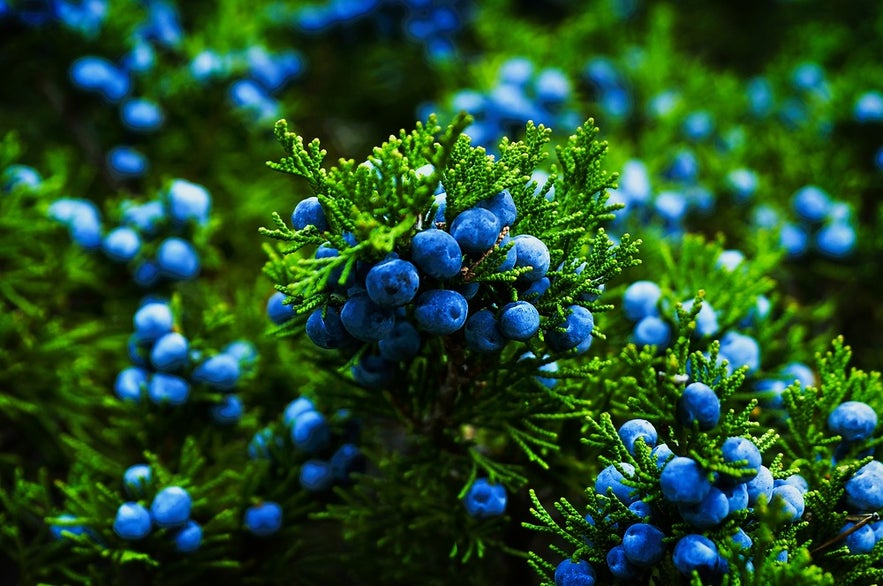 The Icelandic wilderness contains many natural ingredients unique to the country’s environment. Juniper berries, Arctic thyme, birch branches, and even Icelandic moss are all used to produce Icelandic spirits.
The Icelandic wilderness contains many natural ingredients unique to the country’s environment. Juniper berries, Arctic thyme, birch branches, and even Icelandic moss are all used to produce Icelandic spirits.
Rich Historical Heritage
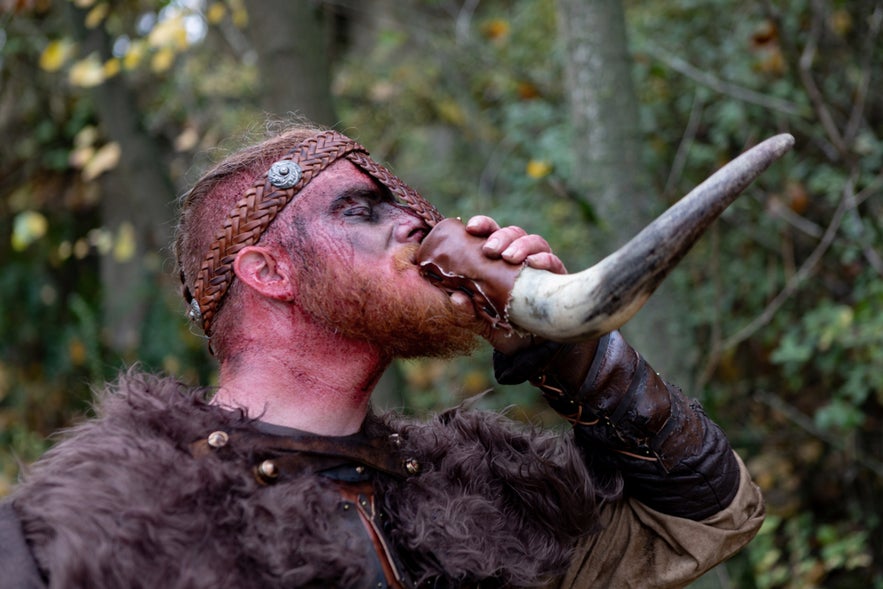 The drinking culture of Iceland has a far-reaching history dating back to its settlement. Thanks to the country’s Viking past and the long-lasting fishing tradition, there is plenty of inspiration to draw on when it comes to distilling unique spirits and liquors.
The drinking culture of Iceland has a far-reaching history dating back to its settlement. Thanks to the country’s Viking past and the long-lasting fishing tradition, there is plenty of inspiration to draw on when it comes to distilling unique spirits and liquors.
Beer Innovation
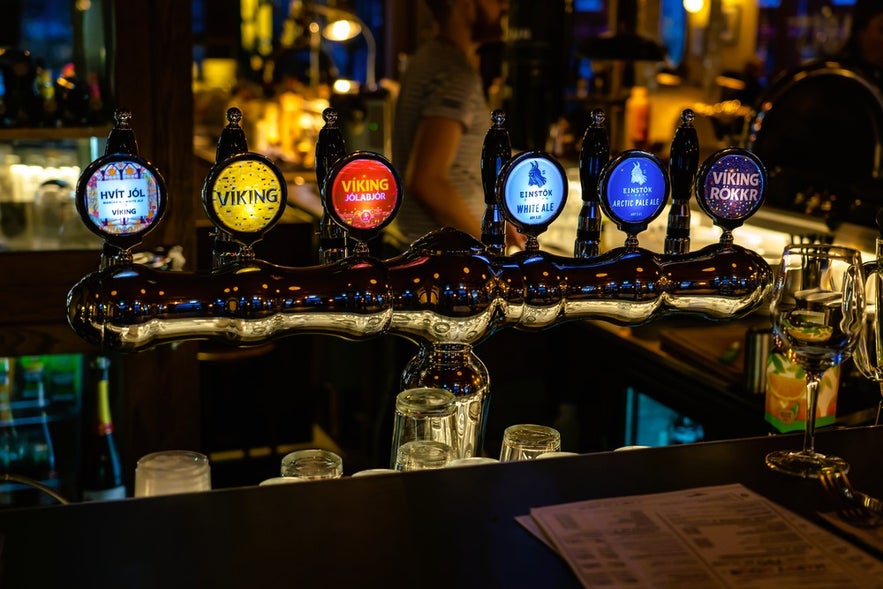 A country that’s been hungry for its own beer scene since before the lifting of the beer ban, Iceland has excelled at creating unique brews you won’t find anywhere else. Beers flavored with unconventional ingredients like whale testicles smoked in sheep dung showcase Iceland's innovative brewing practices. Don’t miss an opportunity to sample a few pints.
A country that’s been hungry for its own beer scene since before the lifting of the beer ban, Iceland has excelled at creating unique brews you won’t find anywhere else. Beers flavored with unconventional ingredients like whale testicles smoked in sheep dung showcase Iceland's innovative brewing practices. Don’t miss an opportunity to sample a few pints.
Icelandic Liquor Classics and Must-Tries
 Ready to explore Icelandic spirits? Have your glasses ready as we highlight local liquor brands you shouldn’t miss when visiting Iceland.
Ready to explore Icelandic spirits? Have your glasses ready as we highlight local liquor brands you shouldn’t miss when visiting Iceland.
1. Brennivin
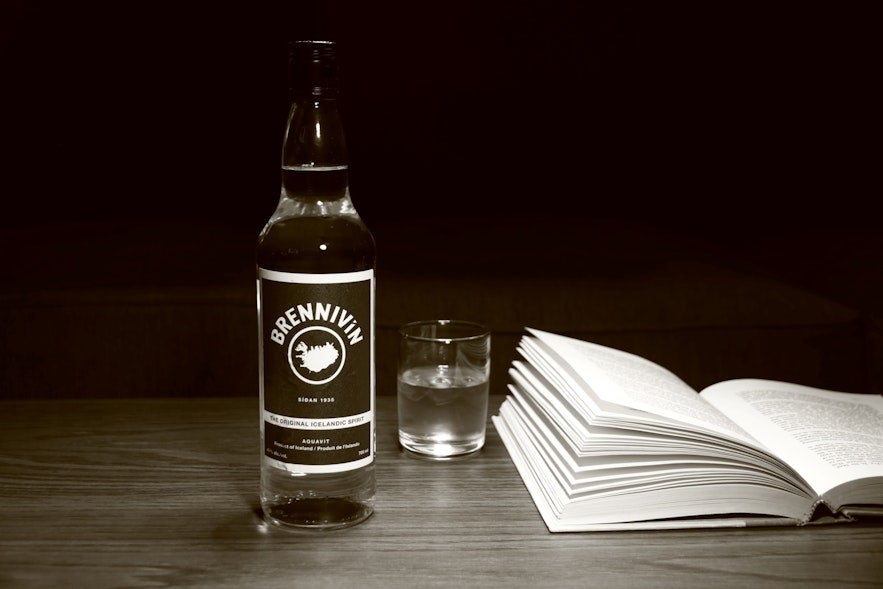
Iceland’s national drink, Brennivin, literally means “burnt wine”, giving a hint about its distillation process over an open flame. Nicknamed the "Black Death," it has historically been used for several strong liquors imported by Danish traders in centuries past.
Today, the name “Brennivin“ is reserved for a specific type of clear, unsweetened schnapps in production since the 1930s. It is an akvavit, a type of spirit common in Nordic countries, with a distinctive caraway flavor that can be an acquired taste.
The state originally produced Brennivin during the prohibition era until a private company took over production in 1989. The original black label featuring a skull — an attempt to make the drink unappealing and deter consumption — inadvertently increased its popularity. The label, now iconic, remains on the bottle.
While Brennivin was once a popular choice for mixing, today, it is most commonly consumed as a straight shot or a sipping spirit. Far from an everyday drink, Brennivin is reserved for special occasions. It plays a large part in many Icelandic traditions and festivals, like Thorrablot.
It is also consumed with traditional Icelandic cuisine, such as fermented shark (hakarl), where the strong flavor of Brennivin is said to complement the pungent taste of the meat. A shot of Brennivin is offered at the end of the Reykjavik Food Walk Tour, an unmissable introduction to Iceland's food and drink culture.
-
Learn more: What is Brennivín and How Is It Made?
2. Flóki Whiskey
Eimverk Distillery played a significant role in putting Icelandic whiskey on the map. Its signature whiskey, Floki, is matured in new American oak casks using barley from Icelandic soil combined with Icelandic spring water, resulting in a complex malt.
The whiskey derives its name from the Viking explorer Hrafna-Flóki. One of the first voyagers to sail to Iceland, he is credited with giving Iceland its name. Flóki employed ravens to search the island, earning him the nickname "Raven-Flóki." Three ravens can be spotted on the whiskey's logo today.
A fascinating look at the distilling process at Eimverk Distillery is part of a distillery tour with Icelandic whiskey, gin, and Brennivin.
3. Björk Liqueur
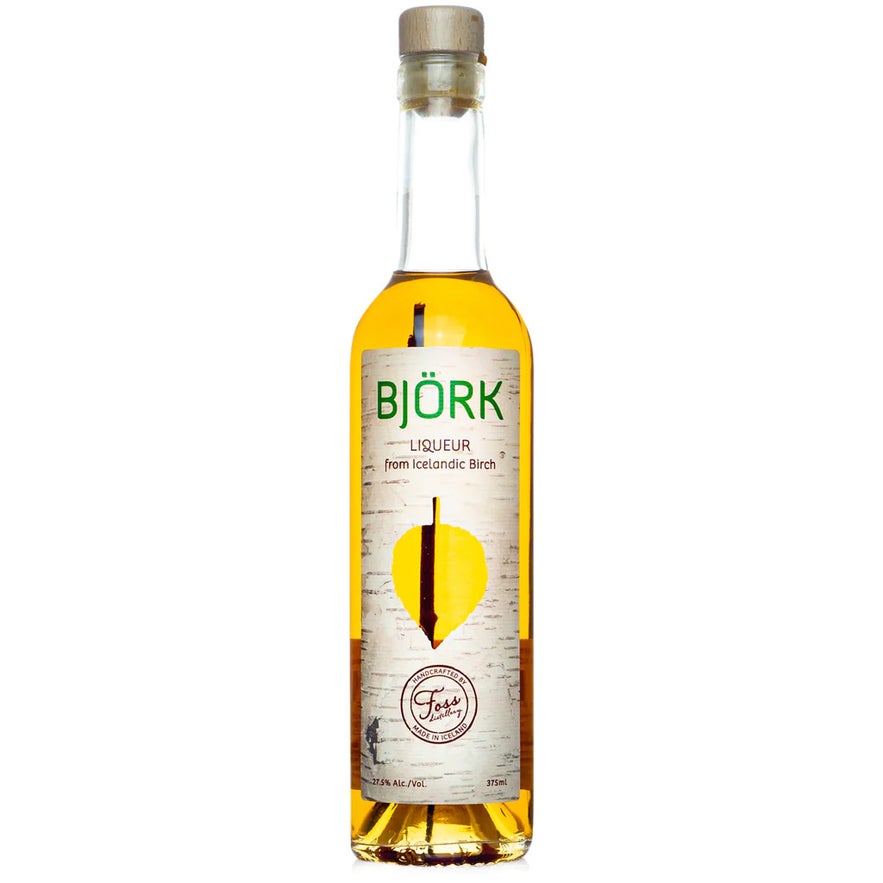
No, not the musician.
Bjork, the Icelandic word for “birch”, is a one-of-a-kind liquor made from birch tree sap. The sap is harvested during the short spring season to be fermented and distilled into a smooth, slightly sweet liquor.
Bjork is part of a larger family of birch liqueurs. Different variations are available in Birkir, Bjarki, and Borkur. The brand is easily recognizable thanks to the distillery's signature touch — a birch branch into every bottle.
Top 3 Brands of Icelandic Vodka
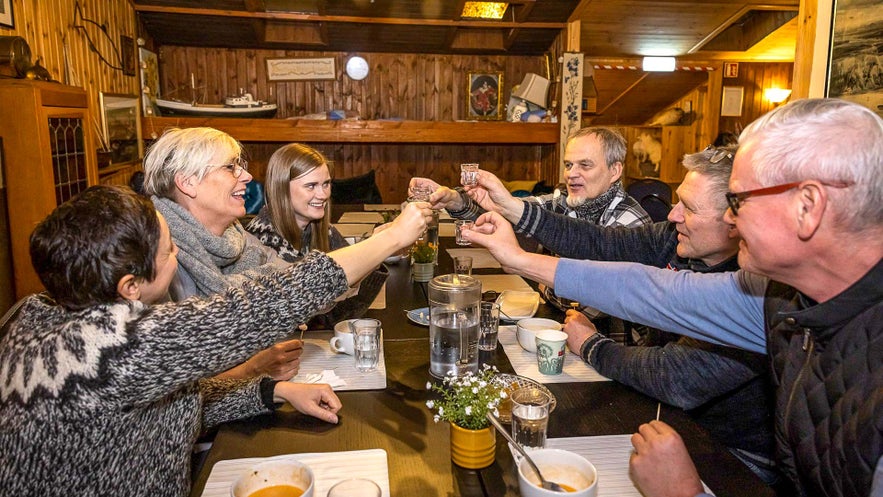 While Iceland is relatively new to the world of distilling vodka, several high-quality vodka brands are available that use the country's natural resources. Here are our choices for the best three Icelandic brands of vodka, perfect for a celebratory toast.
While Iceland is relatively new to the world of distilling vodka, several high-quality vodka brands are available that use the country's natural resources. Here are our choices for the best three Icelandic brands of vodka, perfect for a celebratory toast.
1. Reyka Vodka
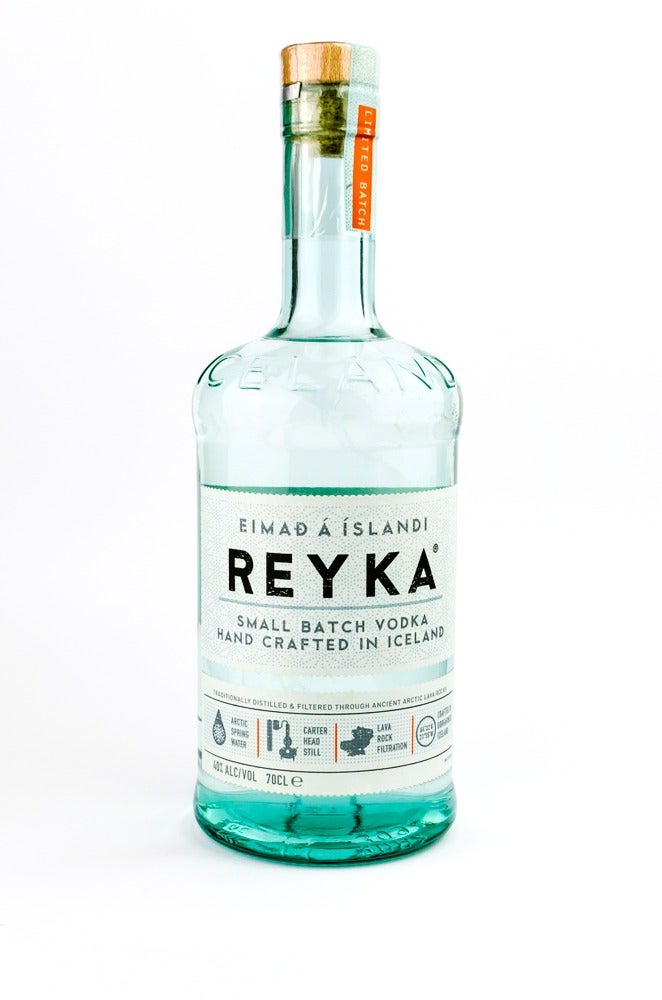 Introduced in 2005, Reyka Vodka is a premium vodka that quickly garnered international acclaim from vodka enthusiasts. Reyka is created using sustainable energy and is hailed for its exceptional quality and unique production process.
Introduced in 2005, Reyka Vodka is a premium vodka that quickly garnered international acclaim from vodka enthusiasts. Reyka is created using sustainable energy and is hailed for its exceptional quality and unique production process.
Distilled in the town of Borgarnes from barley and wheat, Reyka Vodka is made from glacial water that runs through a nearby 4,000-year-old lava field. The rock naturally filters the water, resulting in some of the purest water on Earth. This water has a unique mineral composition that adds to the vodka's flavor and character.
2. Katla Vodka
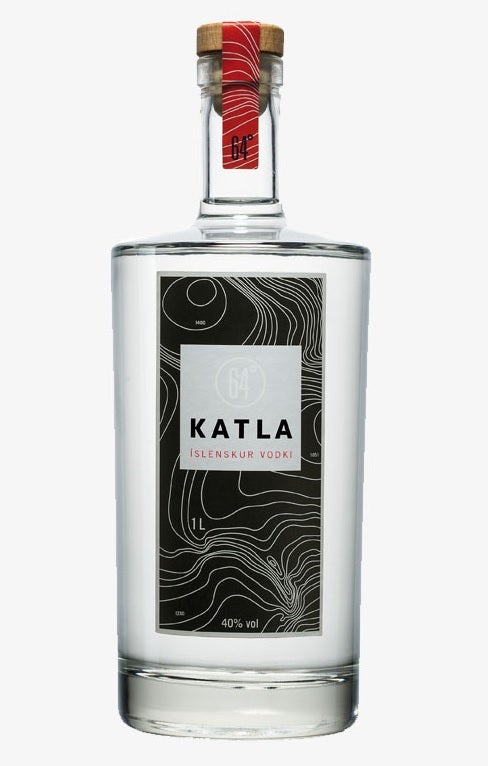
Produced by a family-run microdistillery, Katla Vodka is another excellent addition to Iceland's emerging vodka scene. Making full use of Iceland's pure water, Katla is rich, smooth, and distilled numerous times to achieve the desired purity.
The vodka shares its name with Katla, one of Iceland's mightiest volcanoes. The black and white packaging is a nod to the mountain's location on the map, while the red label at the cap symbolizes lava.
3. Loki Vodka
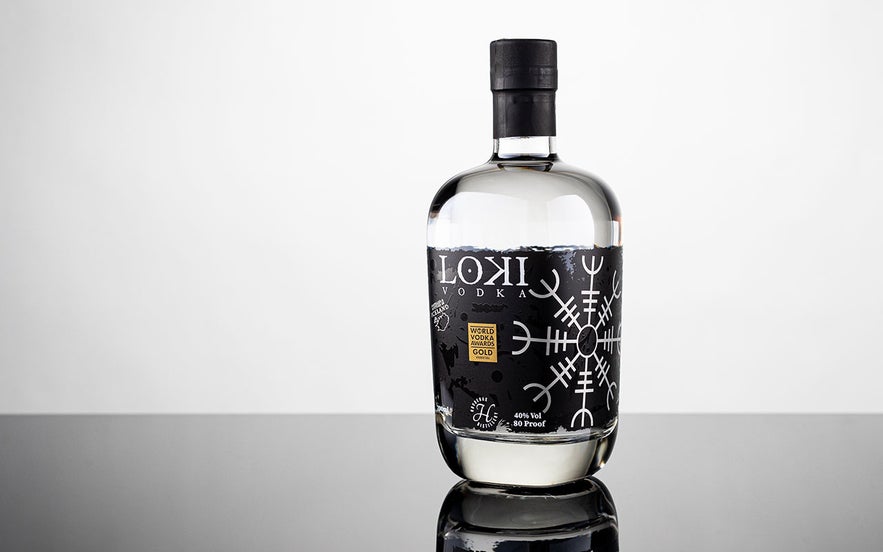
The silky smooth Loki Vodka is the only potato-based vodka distilled and bottled in Iceland. It has won international awards and is considered one of the best premium vodkas available in Iceland.
Loki Vodka is named after the Norse god of mischief, and the bottle features a large Icelandic magical stave, the Helm of Awe. This might mean the vodka makes you mischievous. (We just know it’s delicious.)
Top 3 Brands of Icelandic Gin
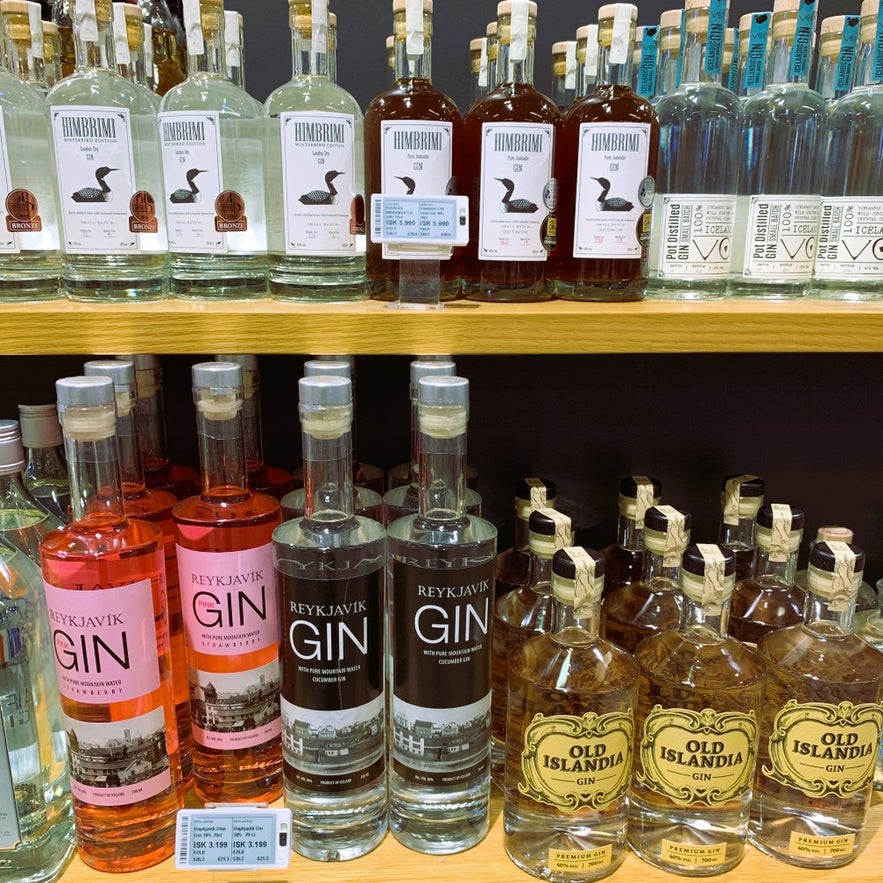 Gin production has become increasingly popular in Iceland in recent years. The country's pure water and unique local ingredients make a great base for producing a tasty gin. Here are our choices for the best brands of Icelandic gin.
Gin production has become increasingly popular in Iceland in recent years. The country's pure water and unique local ingredients make a great base for producing a tasty gin. Here are our choices for the best brands of Icelandic gin.
1. Himbrimi Old Tom Gin
Based on an early 18th-century gin recipe, Himbrimi is inspired by the scent of botanicals that grow in the Icelandic wilderness. Himbrimi is a sweet, floral, and complex gin that has become popular in Iceland. As an Old Tom-style gin with a much sweeter profile, it is more accessible for people who don't usually like gin.
“Himbrimi” means “the common loon” in Icelandic. The country’s native water bird adorns the bottle label. A beloved bird inhabiting many lakes and ponds in Iceland, the common loon is known for its spectacular diving abilities and eerie calls.
2. Ólafsson Gin
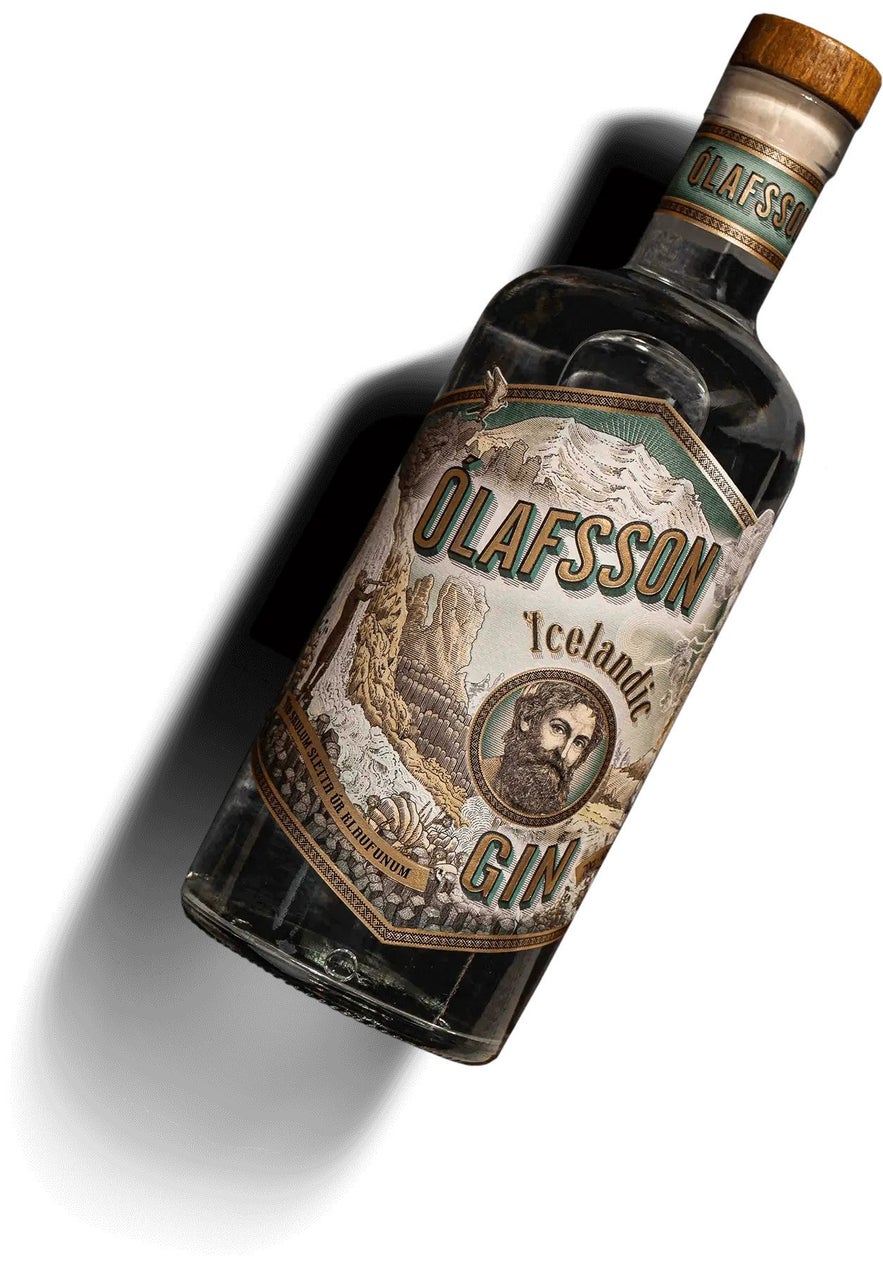
Named after a famous Icelandic explorer from the 18th century, Olafsson Gin boasts a label that looks like the cover of a classic adventure novel. This gin is distilled using foraged wild Icelandic flowers and herbs, such as Arctic thyme, Icelandic moss, and juniper.
Eggert Ólafsson (1726-1768) was an Icelandic writer, naturalist, and traveler, best known for his collaboration with his colleague Bjarni Pálsson on the seminal work “Travels in Iceland.” They embarked on an extensive journey throughout Iceland from 1752 to 1757, documenting their observations and experiences of Iceland's landscape, nature, and culture.
3. Icelandic Eagle Gin
Introducing another bird to the Icelandic gin lineup, Icelandic Eagle Gin makes excellent use of pure Icelandic water and has a soft, sweet finish. It is made from juniper berries, coriander, ginger, angelica, and a bit of orange and lemon.
Strongman and “Game of Thrones” actor Hafþór Júlíus Björnsson served as the brand ambassador for Icelandic Mountain Vodka, the predecessor to Icelandic Eagle Gin. While not quite as muscular as the strongman, the eagle is still a fine symbol of Icelandic heritage.
Iceland Liquor Curiosities and Unique Spirits
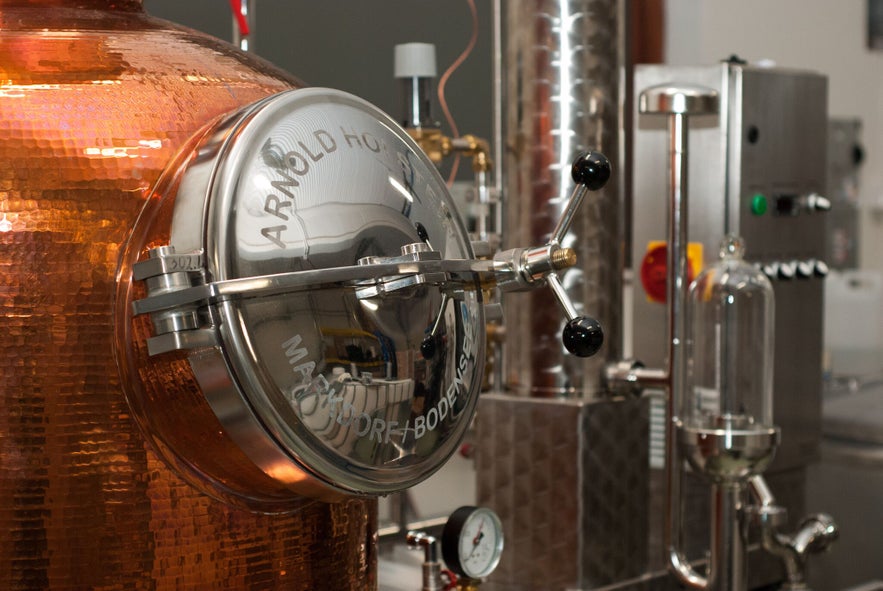 Iceland produces several unusual drinks that are unique to the island, many made through careful distillation using the country’s pure water and local ingredients. Here’s a short list of liquors with their own connection to Icelandic culture.
Iceland produces several unusual drinks that are unique to the island, many made through careful distillation using the country’s pure water and local ingredients. Here’s a short list of liquors with their own connection to Icelandic culture.
1. Opal
Opal is a popular and longstanding staple in Iceland's liquor lineup. Based on Opal candy, this liquor is best described as sweet, licorice-forward, with a hint of menthol.
Consumers who do not have fond childhood memories of chewing licorice may not take to the liquor well. Film director Quentin Tarantino described Opal in an interview with Conan O'Brien:
"Now, I don't really know what poison tastes like because if I did, I'd be dead. But if I had to imagine what poison tastes like, it would be this stuff: Opal."
No matter what you think of Opal, you won’t know until you try it.
2. Landi
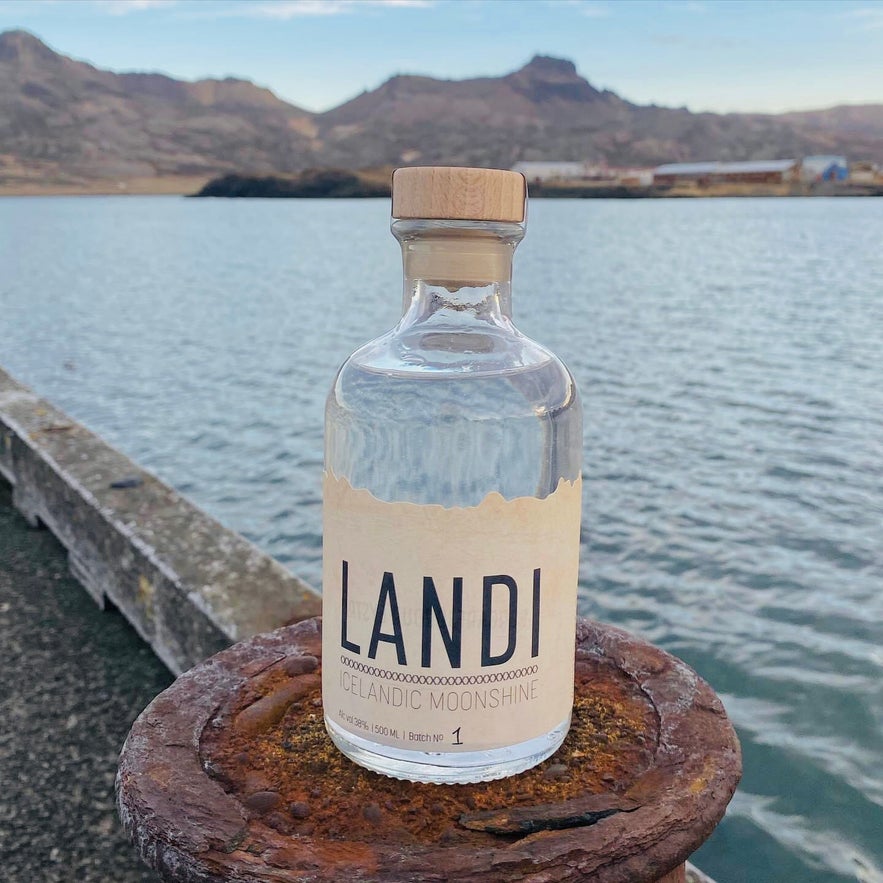
Landi is Icelandic moonshine, an illegally distilled spirit that was popular during the prohibition era. Typically produced with homemade distillation methods, Landi can be unsafe due to a lack of regulation of production methods and ingredients. A common Icelandic urban myth is that drinking too much Landi could cause you to lose your eyesight.
However, commercially branded Landi is different. Introduced in the Borgarfjordur Fjord, where moonshine brewing was common during prohibition, this Landi is based on old traditions but distilled with modern technology and extreme care, according to stringent regulations.
3. Fjallagrasa Icelandic Schnapps

Have you ever thought, "Do you know what this drink could use? A large clump of moss floating in it"? If so, you’re in for a treat.
Fjallagrasa Icelandic Schnapps is a unique spirit made from hand-picked Icelandic mountain moss. It is made by steeping the ground moss in alcohol and then distilling to create a potent liquor.
Fjallagrasa Icelandic Schnapps draws its name from the Icelandic moss it's made from. Icelandic moss has traditionally been used for various purposes. As a medicine, it was used to relieve respiratory conditions such as coughs and sore throats. In food, it was most commonly used to make porridge.
Where to Find Alcohol in Iceland
 International travel has significantly impacted the Icelandic drinking culture, leading to increased popularity and, thus, demand for beer and other alcoholic beverages after 1989.
International travel has significantly impacted the Icelandic drinking culture, leading to increased popularity and, thus, demand for beer and other alcoholic beverages after 1989.
Still, alcohol sales in Iceland are regulated by a state monopoly. State-run liquor stores, Vinbudin, are the only shops allowed to sell alcohol over the counter, with the recent exception of direct sales allowed for breweries.
Here are some more pointers for buying and enjoying alcoholic beverages in Iceland.
Keflavik Airport Duty-Free
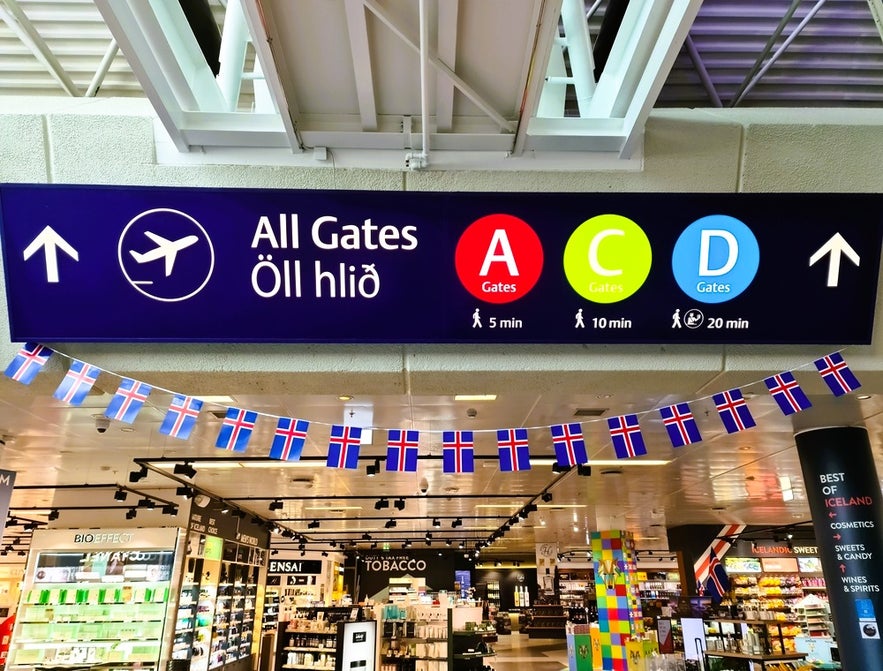 If you arrive at Keflavik Airport and plan to drink in Iceland, grabbing some bottles from the duty-free store is an excellent idea, as the prices are lower. If you've developed a taste for Icelandic liquor during your stay, this is also a great place to take home a liquid Icelandic souvenir.
If you arrive at Keflavik Airport and plan to drink in Iceland, grabbing some bottles from the duty-free store is an excellent idea, as the prices are lower. If you've developed a taste for Icelandic liquor during your stay, this is also a great place to take home a liquid Icelandic souvenir.
Vinbudin Alcohol Store
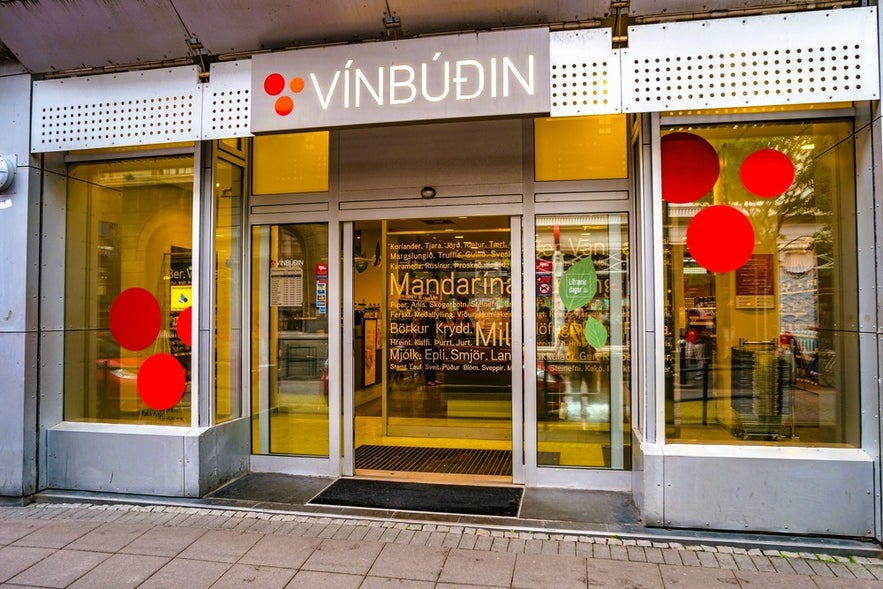 All over Iceland, you will encounter the state-run chain of alcohol stores, Vinbudin. Open Monday to Saturday, the larger stores stock a wide selection of different types of liquor, beer, and wine, while the smaller ones tend to stick to the staples.
All over Iceland, you will encounter the state-run chain of alcohol stores, Vinbudin. Open Monday to Saturday, the larger stores stock a wide selection of different types of liquor, beer, and wine, while the smaller ones tend to stick to the staples.
Opening hours can vary depending on location, with stores in villages in the countryside usually having shorter opening hours.
Bars and Restaurants
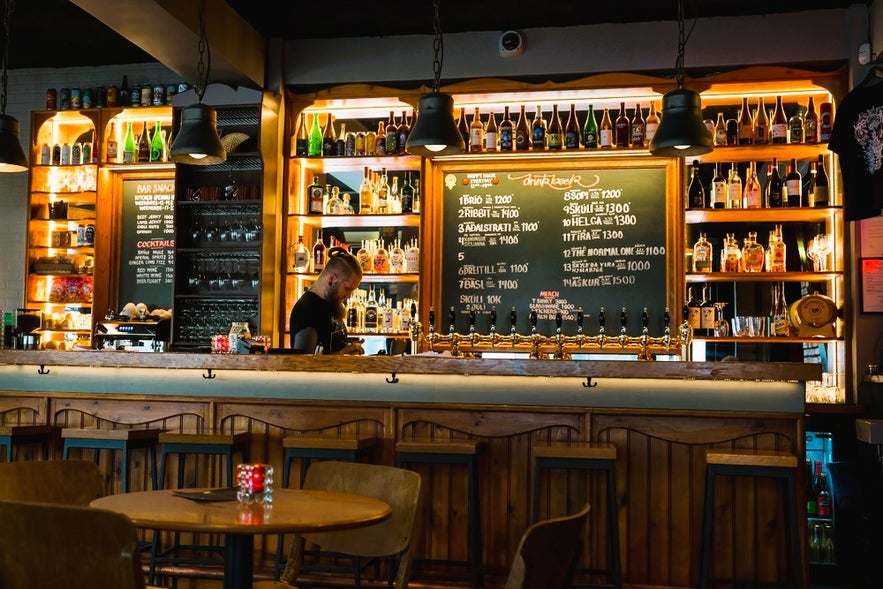 Iceland has a thriving bar scene, with establishments stocking liquors from various producers and brewers. If you don't find the drink you're looking for, don't be afraid to explore multiple bars or sample other items on the drink menu.
Iceland has a thriving bar scene, with establishments stocking liquors from various producers and brewers. If you don't find the drink you're looking for, don't be afraid to explore multiple bars or sample other items on the drink menu.
If you're worried about prices, remember to check your VIP Club access for exclusive discounts and offers at many of Reykjavik's most popular bars and restaurants.
Icelandic Liquor and Drinking Culture FAQs
With abundant natural resources, pure Arctic water, and a knack for brewing and distilling innovation, Iceland has a lot to offer to drinking enthusiasts. Still have some questions about alcohol in Iceland? We have answers!
1. What is the legal drinking age in Iceland?
The legal drinking age in Iceland is 20 years old. This applies to both purchasing and consuming alcohol.
2. Where can I buy alcohol in Iceland?
Alcohol with an ABV above 2.25% is only sold at Vinbudin, the state-run liquor store. Beer with lower ABV is available in supermarkets. Bars and restaurants also serve alcohol.
3. Is alcohol expensive in Iceland?
Unfortunately, yes. Due to high taxes, alcohol prices are among the highest in Europe. Many visitors buy duty-free alcohol at Keflavík Airport upon arrival to save money.
4. Was beer illegal in Iceland?
Yes. Beer was banned in Iceland from 1915 until March 1, 1989. This date is now celebrated as Beer Day.
5. What are the most famous Icelandic alcoholic drinks?
-
Brennivin – A caraway-flavored schnapps, nicknamed "Black Death."
-
Icelandic craft beers like Einstök – Popular among locals and tourists.
-
Opal & Topas – Strong licorice-flavored liqueurs.
6. Is public drinking allowed in Iceland?
Drinking in public spaces (like streets and parks) is not allowed. However, you can drink at bars, restaurants, and private gatherings.
7. What’s the drinking culture like in Iceland?
Icelanders tend to drink socially and heavily on weekends, particularly on Friday and Saturday nights, when some bars even stay open until 4:00–5:00 AM.
8. What’s the strongest Icelandic alcohol?
Brennivin (38-40% ABV) is the strongest traditional spirit, but some Icelandic liqueurs and distilled spirits exceed 40% ABV.
9. What should I try if I want an authentic Icelandic drinking experience?
Try a Brennivin shot with hakarl (fermented shark) for an "authentic Viking experience". If that’s too extreme, grab a local craft beer at a Reykjavik bar.
A Taste of Iceland in Every Glass
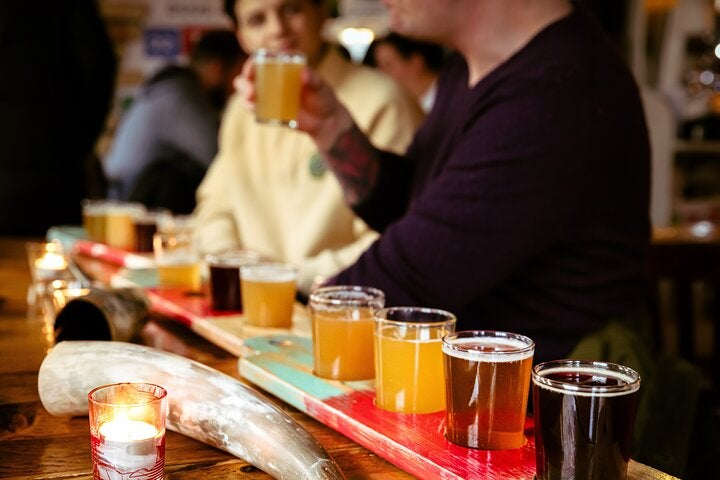
Despite its complicated relationship with alcohol, from centuries-old brewing challenges to a long prohibition, Iceland has grown into a hub of innovation and craftsmanship. Distillers and brewers use pure glacial water, wild botanicals, and local ingredients to create flavors found nowhere else.
Whether you are sampling spirits at a cozy bar in Reykjavik, joining a beer and schnapps walking tour, or picking up a bottle from Vinbudin to enjoy responsibly, Iceland offers plenty of ways to experience its vibrant drinking culture.
So, grab your glass, say "Skal!" and celebrate the bold flavors and fascinating heritage of Icelandic liquor.
Are you ready to explore Iceland’s bold alcohol flavors? If you already have, what were your favorite Icelandic spirits? Which one would you most like to try? Comment below to let us know!

